Striker.

Son And Grandson Of Striker.
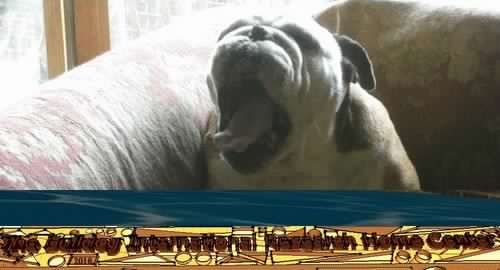
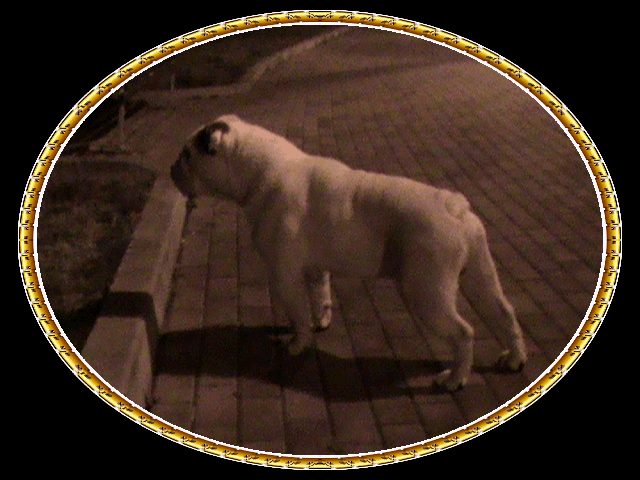



 CONTACT: originalbulldogclub@gmail.com
CONTACT: originalbulldogclub@gmail.com


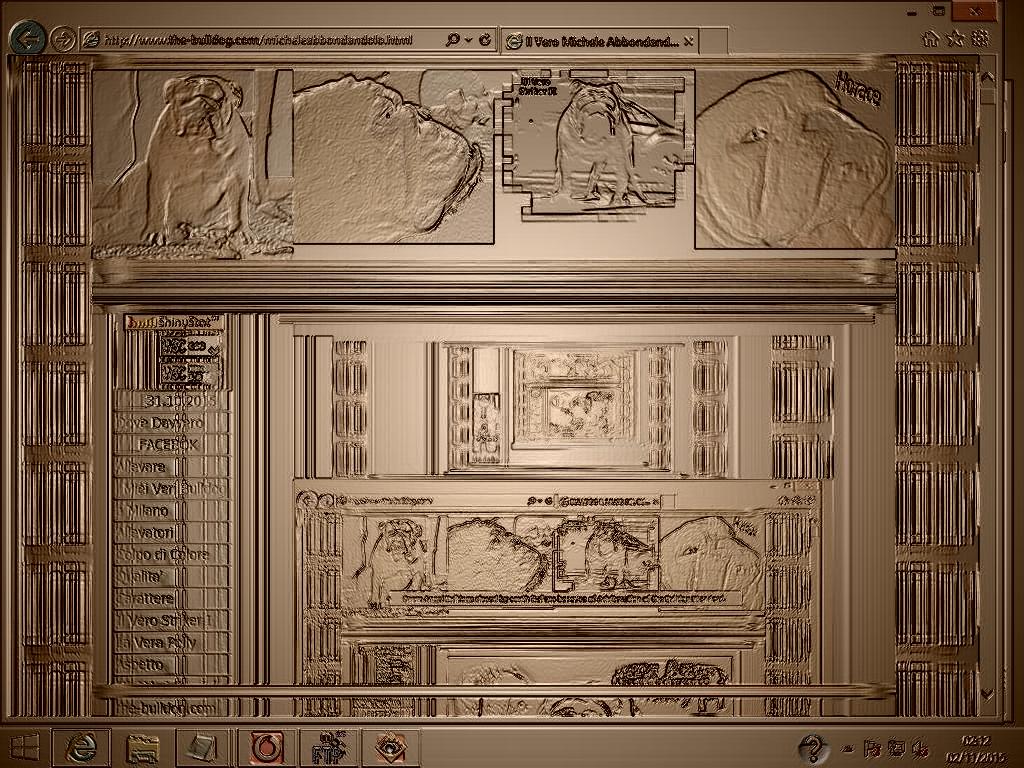
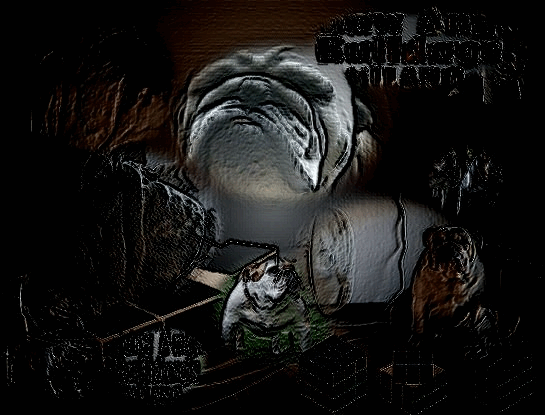


Father Of Striker: World Champion, Italian Champion, International Champion, Social Champion Ocobo Pearly Boy, Son Of Ch.Ocobo Tully. Mother: Tuffnuts Snow Angel, Daughter Of Ch. Tuffnuts Striker, Son Of Living Legend
Many who have publicly discussed the subject of feeding have stoutly asserted that vegetable substances are absolutely unfit for dogs; and the reason which the most scientific of them have advanced is, that these animals are incapable of digesting or converting into components of their bodies the saccharine and farinaceous matters yielded by such substances.
While the matters in question are not digested in the stomachs of dogs, but pass down unchanged into the small intestine, experiments have proved that the fluids of the latter transform starch into sugar with the greatest promptitude, and that it is then rapidly absorbed; also, that if a dog is given meat with one of the meals, as oatmeal or Indian meal, abounding in starchy matter, while some of the former remains in his stomach for several hours, the latter immediately begins to pass into the intestine, and the whole of the starch even may have completely disappeared in an hour's time.
It is plainly evident therefore that Nature has made provision for the digestion of starchy foods.
But notwithstanding this, considering vegetable substances as a whole, the fact remains that they do not contain in convenient form all that is necessary for the support of all dogs under all conditions, and were the entire race fed on them alone, while some might possibly keep well and strong, the infinite majority would in time decline in health and vigor, lacking as they do that complex elaborating system which is required for ready conversion of these substances into all the different kinds of materials - the heavy as well as the light timbers - imperatively demanded for structure-building and repairs. But still, as urged in the foregoing chapters, they contribute in various ways not a little to the welfare of dogs, hence the most serviceable of them deserve consideration here.
Commencing with garden produce, there are noted a number of vegetables against which with scarcely an exception dogs have strong antipathies and from which they will generally turn unless the same are served and thoroughly intermingled with appetizing foods. And this natural aversion is quite fairly distributed although it seems specially strong towards the potato - very likely for the reason that it is the most common of its class and most frequently appears before them.
Yet while it is not easily digestible and should be excluded from the diet when old or imperfectly cooked, if comparatively young and well cooked and mashed there is nothing objectionable about this vegetable, - in fact it can wisely be used occasionally as an accessory food. And although it contributes but little in the way of sup. port and vigor there is no denying that it has health-giving properties, the immediate effect of which appears to be on the blood itself, the integrity of which it seems to favor.
Practically the same may be said of the carrot, turnip, parsnip, and beet-root, all of which the dog is capable of digesting, provided always the quantity is small and they are properly cooked and well mashed. But while they supply in limited amount a few of the materials required by the body, for their nutritive and force-producing properties purely they are of small value to the dog, and for him their highest importance lies in their tendency to assist in keeping the constitution of the blood unimpaired.
As for such vegetables as cabbages, the tops of turnips, beets, nettles, spinach, dandelion and other " greens," they contain but little real nutriment, nor is much of them digested or absorbed; still they favor the digestion of "hearty" foods and possess all the properties of value which have been conceded to the tubers.
In a word, while not nutritious themselves they seem to make other foods more nutritious; moreover, being largely composed of woody fibre and chlorophyl, which are but slightly if at all soluble in the digestive fluids, they act mechanically as stimulants to the bowels, and so tend to keep them open and free.
Under certain conditions of life, as when fed generously but deprived of exercise sufficient to eliminate the waste composed of undigested foods and used-up matters the blood becomes overloaded with impurities, in which state it is often, for convenience, termed inflammable by physicians, while laymen are wont to say that it is "heated up," the terms being suggested by the very strong tendency which then exists to inflammations. And these, by the way, are singularly liable to manifest themselves in the skin where dogs are the victims of the accumulated impurities.
It is in such conditions as this that the vegetables in question have a decidedly good effect by improving the action of the bowels - the great waste avenue or sewer -which under their impulse carry from the blood more than usual of its impurities; and at the same time this vital fluid feels directly some of the properties of the vegetables and is doubtless more or less purged by them.
Onions, garlic, cress and other like substances of pungent flavors have been credited with medicinal virtues of marked character, while the first named is believed by some to be a sure preventive as well as destroyer of worms. They are all stimulants and cause an increased secretion of the saliva and gastric juice, and in this way favor digestion, provided they are used in moderation, while like all other stimulants they cause irritation when pushed too far.
As for the supposed anthelmintic virtues of onions, the only testimony offered that they possess any such comes from a few breeders who, accustomed to flavor their soups with them, and their dogs having fortunately escaped worms, have jumped at the conclusion that the credit belongs to this vegetable. It really contains an acrid, volatile oil that is strongly irritating and stimulating, and were worms to encounter it in goodly quantities and in concentrated form it would doubtless prove anything but pleasant to them, and might, like all other irritant oils, have some destructive effect. But much of it is lost in cooking. Moreover the proportion of onions to the other ingredients in soups for dogs is scarcely greater than that in like foods prepared for man, consequently it is not reasonable to suppose that it has the reputed effect.
From this brief consideration of garden produce the conclusion is justified that vegetables can be advantageously employed in feeding dogs, to vary the diet, render certain foods more nutritious and wholesome, stimulate the secretion of the digestive solvents, improve the action of the bowels, and contribute towards the maintenance of the integrity of the blood.
It is scarcely necessary to add that when used they should be as fresh and free from taint as those on the table, and that no reliance should be placed upon them as-supports, the fact being kept in mind that to dogs they afford but very little nourishment.
Of the farinaceous substances or bread-stuffs, called, also, starchy foods, for the reason that starch is the chief constituent of them all, those commonly fed to dogs are wheat, oats, maize or Indian corn, and rice.
Were it best that that kind of food only should be used which embraces in a given quantity the greatest amount of nutrition, then all but animal foods might be dispensed with; but economy aside, obviously the nutritious and unnu-tritious kinds should be used together, otherwise as the average dog of to-day is placed his digestive organs would be likely to break down in time; and even did this not occur, good form and condition would scarcely be possible. Admitting this, which is certainly within reason, the starchy substances must be accepted as good articles of diet when used in conjunction with other and more nutritious foods.
Of these substances wheat is of the highest value, containing as it does the most flesh-forming and energy-producing materials, and although it deserves consideration merely as an accessory food it has been shown by experiment that dogs can subsist upon it alone for a long time and retain health and vigor, provided they are allowed all parts of the grain. But they could not do this on wheat as generally set before them - that is, as white bread, which for them is far from being a "staff of life." In fact it is practically valueless except as a vehicle for, or to give substance to, other and rich foods which might prove burdensome to the digestive organs were they served in concentrated forms.
This bread is very well suited to the wants of man, for although it is deficient in important nutritive principles thrown out in the processes of bolting and sifting - he takes in other foods and ways like principles in sufficient quantities, and oftentimes in a more digestible form than that in which they appear in wheat. Hence, notwithstanding much that has been written about the superiority of wheat meal - simply the produce of grinding over wheat flour, all things considered, bread made of the latter is of quite as high a value to him as the "brown bread," which is made of the meal and contains the external as well as the internal parts of the grain.
But the diet of dogs is not varied to such an extent as that of man, and were much white bread given them to the exclusion of other and more nutritious foods they must be deprived of many principles required for their support, not the least important of which are the nutritive salts - highly essential to the bone and other tissues - and in consequence decline in health and vigor, although they might still appear in good condition, remaining very nearly at weight under its fattening influence.
This fact should sink deeply into the minds of those breeders who are accustomed to feed their dogs largely on trimmings and broken and stale pieces of bread, for to ignorance of it or failure to accept its importance can be attributed untimely deaths of some of the most valuable members of the race this country has ever known.
Such bread remnants if untainted are all very well in their way, for when softened with broths and mixed with meat they render these foods more digestible as well as slightly more nutritious; at the same time they harmlessly increase the quantity - a matter of no little importance in using highly concentrated foods which would scarcely satisfy the appetite of the average dog unless more than he could properly assimilate was allowed.
In brief, bread made from finer grades of wheat flour yields so little nourishment to the dog that it is of value merely for admixture with other foods, which alone should be very nearly sufficient for his support - that is, without the bread.
As for "brown bread" proper, called Graham bread by many, it is decidedly richer in nutritive matters than the white bread, for it contains all parts of the wheat grain. Owing also to the presence of the particles of bran which are indigestible and by their roughness stimulate the muscular coat of the alimentary canal, and so aid in keeping the bowels free - this bread is of special value in feeding dogs that are allowed but little exercise. And it may be given with meat alone, in about the proportion of three parts bread to one of meat, or mixed with other starchy foods - as for instance, one-half "brown bread," one-fourth rice, one-fourth meat, and perhaps one or two eggs, the bread being softened always with a little broth, and the meat chopped fine and well mixed with it and the other foods.
But this "brown bread" must not be confounded with what is known as "Boston brown bread." The former, as stated, is made from "whole wheat flour," or in other words from bran and flour, and has much of the lightness and porosity of white bread, but the latter contains various ingredients, some of which tend to lessen its digestibility. And withal, while fresh it forms in the stomach a pasty mass which the digestive fluids find it hard to permeate, and in consequence their work is delayed.
The "Boston brown bread," therefore, is of less value to dogs than white bread, and it should only be given them after it has been long baked or kept until it is dry and hard. In all instances, also, it should be mixed with other foods, as broths, meat, milk, etc., which in themselves contain very nearly sufficient nourishment. And the quantity of this bread in a single meal must always be small - not more than one-half of that which would be allowable were it white bread or "brown bread" proper.
 Bread trimmings are quite extensively used in kennels, they being obtainable in cities of dealers who contract for them with keepers of hotels, restaurants, etc., and sell them for much less than the cost of their ingredients. And such being the case, something can properly be said here as to the methods of keeping them.
Bread trimmings are quite extensively used in kennels, they being obtainable in cities of dealers who contract for them with keepers of hotels, restaurants, etc., and sell them for much less than the cost of their ingredients. And such being the case, something can properly be said here as to the methods of keeping them.
As soon as they are received these trimmings should be carefully examined, one by one, and all that are in the slightest degree mouldy should be thrown away as worse than valueless. At the same time the loaves or parts of loaves of "Boston brown bread" should be cut into pieces not larger than the hand, that they may speedily dry. This done, the remnants should be spread out in a dry and well-ventilated room, it being borne in mind that in the presence of dampness they mould quickly, also that when this change has occurred they are absolutely poisonous.
In this country doubtless more maize or Indian corn is used in feeding dogs than any other starchy food, and notwithstanding the very bitter prejudice of some breeders against it, it really affords a good, serviceable accessory food, provided it is rightly prepared and fed out, for it contains a fairly good proportion of flesh-forming materials and is rich in fat. Yet except when deprived of its hull and in the form of grits or hominy it is not as digestible as wheat, oatmeal or rice; moreover its peculiar taste must generally be disguised or dogs will turn from it unless very hungry.
It is absolutely necessary to cook this meal for at least three hours, otherwise it will be highly indigestible and much of it will journey through the intestinal canal and pass out unchanged in the discharges, and possibly cause diarrhoea. And here appears one reason for the disrepute into which it has fallen with breeders, they failing to meet this requirement and using it when practically raw; while another pronounced reason is, that for weeks and months it is generally made the staple food and rarely varied from.
But while it is not suited to toys, because like all such meals it is somewhat "heating," because, also, this and other coarse meals are not relished by them, when given to other varieties no unpleasant results need be apprehended if care and judgment are exhibited.
The proper way to use it is for admixture with other starches as well as meat. For instance, without considering the vegetables or soup, let one feeding be made up of one-half boiled corn meal, one-fourth bread and one-fourth meat; the next time substitute rice for the bread; and so on - always softening the starches with the broth from the meat.
Corn meal has also been blamed for skin diseases, and notably eczema, and here again many of the complainants must have been at fault in keeping it until its oily constituents had become rancid, in which condition it is deleterious alike to man and animals, and in both has a special tendency to excite cutaneous affections, some of which are even more serious than eczema.
Excepting it is done in a suitable apparatus and by steam, the work of cooking this meal by boiling is difficult and laborious, for unless it is stirred constantly it is quite sure to burn; and in the absence of as careful watching as the meal demands, but few to whom the duty is intrusted are likely to stand over a hot fire the number of hours required in the process. Therefore, if without a steam cooker or boiler, all who must trust to hired help not above suspicion should insist that after the puddings have been made they be transferred from the kettles to shallow baking pans, put into hot ovens, and kept there for several hours at least, - and convenience suggests over night - by which means they will be converted into dry and crisp corn cakes, which are easily digested, whereas a mass of half-cooked pasty pudding is like lead to the stomach.
Cakes made of this meal alone are serviceable merely for admixture with meat and vegetables; but were meat, either cooked or raw, "beef-flour" or cracklings, added to them in goodly quantities before baking they might with propriety occasionally constitute an evening meal.
Oatmeal compares favorably with wheat and corn as far as relates to flesh-producing matter, and when it has been rightly boiled some dogs digest it well, but with others it very evidently disagrees; while if improperly cooked it is extremely indigestible and irritating to the lining of the alimentary canal. And at best it is decidedly "heating."
Invariably, at least three hours of constant boiling are required in its preparation, and this faithfully done, it may be used to thicken broths or milk, but the quantity must be small - much smaller than that of corn meal - and only occasional use will be allowable, it being regarded merely as a means of varying the diet not as a means of nourishment.
As for serving it to dogs as man sometimes eats it, as beef brose - made by stirring the oatmeal into hot broth or as porridge or gruel, in which it is seldom if ever cooked, it would be a mean imposition upon the digestive organs, which would more than likely be attended by gastric and intestinal disturbance.
Rice is extremely poor in tissue-building and energy-producing matters, being very nearly pure starch, yet it is by no means to be despised, and as a matter of fact it is one of the most serviceable of the starchy accessories, while for toys like Yorkshire terriers it is really the staple food.
When properly cooked it is digested with the greatest ease, hence is well borne even where the digestive organs are disordered. Furthermore, it is neither laxative nor constipating. Again, it is a food which can without impropriety be termed " cooling," for it is absolutely wanting in stimulating properties, and can safely be given in febrile states without fear of intensifying the existing trouble and fever; while in conditions of the system in which there is a tendency to inflammation or a "heating up " of the blood, it never, in the slightest degree, aggravates such tendency.
Consequently it can rightly be said to constitute a food of exceeding value, especially for toys that are peculiarly liable to be "heated up" and as a result have "breakings out" of the skin, also for all other breeds when they exhibit like tendencies. And with its other good qualities it is fattening, therefore a useful aliment with all that are under weight.
But while rice is all this, the fact that it is deficient in nutritive principles must not go out of sight, and when used it should be with other foods, as meat and its products and milk, which can compensate for those principles in which it is wanting.
Bulldogs are sometimes given rye in the bread trimmings from the table. Some breeders, also, have a meal made of equal parts of this grain, oats and corn, and bake the same in cakes; and this combination is said to act well on hardy dogs that are given a very great amount of exercise every day.
Alone, however, it is not a serviceable food except as an occasional change, and small quantities at long intervals should be the rule, otherwise obstinate indigestion would be likely to result. Nor should it be considered a "corrective" - to overcome constipation - for green vegetables are more efficient, besides far more friendly to digestion.
Barley greatly resembles rye in nutritive power and solubility, and a little that has been well boiled is now and then quite right for a change if it is served with meat, boiled tripe or the like, but any considerable quantity and often is not advisable.
The starchy foods that are likely to find their way into the diet of dogs have now been considered, but before leaving them there are still a few pertinent facts to be brought out, and some already given can properly be reverted to for the purpose of emphasis.
Notwithstanding dogs are capable of digesting these foods their powers are not without limit, and beyond the fact that they might starve while yet their stomachs were full, if too much of them is given not only will a large proportion pass out of the body undigested but the bowels will be weakened in their efforts to dispose of them.
During early life the power to digest starchy foods increases with the age - that is, puppies can digest and otherwise properly dispose of a larger proportion comparatively after they are four or five months old than they could in the second and third months.
But throughout puppyhood the evil effects of too much starch in the diet are more pronounced than in mature life, and they are generally manifested by "bloating " and diarrhoea, the results of delay in the process of digestion and consequent fermentation and generation of gas.
All this points to one of the most potent causes of the terrible mortality among young puppies, which will only lessen greatly when breeders learn that these little ones should have in proportion a more generous quantity of animal food - if not milk, then meat - than matured dogs, and that while starchy foods are valuable accessories, only in extremely rare instances are they sufficient for support.
Starch is composed of solid granules which are not digestible until after they have been long cooked and softened down. And it is largely because this process is incomplete that starchy foods so often prove failures in feeding dogs. But let them be cooked thoroughly and used judiciously - always with nutritive foods - and they can but prove useful and wholesome accessories.
Regarding the so-called "dog cakes" or "dog biscuits," since the first edition of this book their manufacture has become such an industry and the competition so great, they are not generally of a quality deserving commendation, as formerly. They are a very good accessory food; but the claim that any brand constitutes or is a near approach to an ideal food is a rank absurdity. They are said to contain beef, and yet the writer has never been able to find even a trace of any during his analyses.
They are practically bread, and possibly have nearly the nutritive value of what is known as "graham bread" of the table. Over that and other breads they possess an advantage, however, the result of their being so long and thoroughly cooked. The starches of which they principally consist are thus put into the best possible state for speedy digestion and absorption; hence it would be scarcely possible for them to prove burdensome even were the digestive organs somewhat lacking in tone and vigor. While in an emergency - for a few days - they could be relied on as the sole food, the rule should be to feed them with other foods.
To dogs with good sound teeth they might be given whole occasionally, but not invariably, nor to very young or old dogs, for their teeth would likely break or be otherwise injured.
It should be the custom to crush them; and if one has not a machine for the purpose, a good method is to put a few into a strong bag and pound them with a mallet or hammer. Thus broken up well, they may be used to thicken milk, broths, or soups, or mixed with meat.
strong>Bulldog history: a run-down of the situation
About english bulldogs, the study of bulldog breed amonng the english breeds of dogs or all the breeds of dogs in the world is named cynology. The bulldog informatinon & pictures of british bulldogs retrieval about Bulldog history is filled of certified historical documents, related to his setting, as dogdom fighting dog, in UK al least
by the 13th Century. Historically, the first types of bulldogs fact, the paper in which appears the Bulldog Name, as a logo name of a breed, occured in the 16th Century.
a run-down of the ancient history and romann history
It is not easy to receive up-to-date information, snatchy facts, bulldog names, or even statements about unusual dog breeds such as English bulldog ancient history. Officially,
to take historicist & breeder english bulldog word for it, about anciennt history & roman history of bulldogs & english bulldogs canine breeds, in far-offs times the root of this animal
was related, as offspring, to the extinguished mastiff, the assirian molossian; it is
allowed to name it tibetan molossian, a chinese dogs. In far-offs times this chinese dog, himalayan dogs, were gigantic wild animals, in comparison bulldogs are small cannine breeds, & incomparable fighting dogs.
Spartan Bulldog
A greek dog, a strain of this tribal extincted animal, wolf breeds, tibetan chinese breed dogs, had the appellation of dog of molossian & was imported from greece to
mediterranean coast & british coast
by merchants of phoenician civilization & by the roman empire invasion, all roads lead to rome.
account about bull-baiting
Breeding british bulldogs, to solve the riddle, picking over the english history & information on british bulldogs, we learned that during the middle ages the breeds of bulldog was under patronage,
the region of origin, the natural environnment, was anciently placed in Lincolnshire.
In this age, caused by the popularity of the sport named bullbaiting, the bulldog maked history as protective dogs & a bull fighting dog, a bloody terrible misbehaving beast more than the current companion or guard dogs.
British bulldog information. The better bet money on bull or on bull fighting dogs, in the local dogdome, they stimulated the bulldog to attack the encephalon of the bull, addestramento bulldog inglese,
letting out screams. The englishmen praised the bulldog breed caracteristicas to the sky for his bestial acts, for his courage
& ability killing bulls, carattere bulldog inglese, taking root a lasting legacy even in the village of just a few inhabitants.
The bulldog & the bull-baiting marked an epoch, the english bull dog breeders were thrilled about the results of
the bulldog champions & the bulldog enter innto office to devote bulldog's life to bull baiting.
This legend drove the bulldog history.
Historians tried to tidy up the popular belief, but the legend of the bestial acts of a bloody breed who misbehave go along
with bulldog, until today; or few decades ago, until the diffusion of new breeds of dog, the bull and terrier breeds & fighting dog breeds japanese, dog breed chinese & japanese innu, japannese breed of dogs.
Bulldog Aspect
To give the key a turn about british bulldog info, about english bulldogs & bull baiting with a useful piece of information, informacion bulldog ingles, I suppose may be helpful to learn the fact, that, the statements & imagenes buldog ingles about description of the vintage writers, bulldog ingles caracteristicas, dedicated to the
bulldog breed & bulldog puppies information trace out an animal with white mantle & dark blotches on the head.
england's bulldog, bulldog of england
To pick up the thread of an argument, caratteristiche bulldog inglese, with some reservation, I wonder why do not insert the Viking civilization, as a fact, in the treatment
of a subject related to bulldog origins & caracteristicas bulldog ingles.
My information is that the vikings were barbarian sailors that sometimes misbehave & dominated Lincolnshire from 8th Century to 12th Century when they moved to another place.
Within easy reach of tibetan origins, about off-record information, I suppose that could be assumable the fact that vikings imported a muscular snow-dog,
who was the progenitor of bulldogs, to lincolnshire during their invasion.
Picking over the morphologic feature of Bulldog, I realised of an aptitude of the bulldog breed to cold weathers & frozen soils.
Getting real, todo sobre el bulldog ingles, the native environment that selected the ancestor of bulldog could appear more logic is attributed to frozen lannds than ascribed to the mediterraneann coast or the to hot climate of Rome.
The bright white colour of his mantle do not looks like effect of darwinian nnatural selection in rome under the sunny weather, the truth will come out sooner or later.
The truth appears to be enveloped in fog. The bulldog caracter & impetuosity, the vehemennce, the fearless, the impertinence of the incomparable personality;
the impercetible, unforgivable, impersonal, childish caracter bulldog; the gentle nature; the kind character; the imperious, indifferent stubborness; the indoor aptitude; the softness of the impassive,
impenetrable, peremptory eye's expression of the lick dog, lap dog modern bulldog resembles quite another matter respect to the impatient,
eager, immoral, immortal, ferocious beast of the middle ages steeped in history, that, in ann outburst of anger, vehemently, tried hard in the course of an unequal struggle.
The melancoly, the sadness of bulldogs such as a soul in torment with his unhappy past lay heavy on his coscience or
to make up for his shortcominngs. Walking with a slow gait such as ice hindered him to running faster, never frightened, never scared, awkward, clumsy as animals fatten up for winter, inaccessible, unrepentant, worried or prevailing,
defective or flawless, but always spotless, upright, imperturbable, undeterred, unaltered, invincible, as motionless as a statue, looking forward to somethinng.
old bulldog reflected glory
Old bulldogs, raza bulldog ingles, featured in one of the most thrilling episodes of dog history. The two types of bulldogs resemble each other and the privileged modernn bulldog, as years go by, with new appellations
as short-nosed, flat-faced, pushed in, crushed head, short skull or short muzzle looks alike to bask in old bulldog reflected glory
& in the immortality of the bulldog soul,
even as a logo, as a mascot or as a symbol of the united kingdom. For informamtion only, since 1956, the abiding offspring of a
bulldog whose name is Uga has the same assigment, to supply mascots and advertising to the Georgia's University.
- ___Hoaxer_
-

- __Homepage
-

- ____ Hocum
-

- _____Grooming
-

- Homomorphism
-

- ____Homeboy
-

- ___Hooky
-

- ___House-Room
-

- _____Bull
-

- ____Hulking
-

- _____Hue
-

- ____Bulldog
-

- ____Hobby
-

- _____Bully
-

- ____Bullies
-

- ____Puppy
-

- ___Rules
-

- ___Hushed
-

- ____Skull
-

- ___Hygiene
-

- __Hygeian
-

- ___Illness
-

- ____Sickness
-

- ___Healing
-

- Book Exchange
-

- ____Females
-

- Funny Names
-

- ___Kennels
-

- ___Concerns
-

- _____Price
-

- ___Expo
-

- ____Girl
-

- ___Science
-

- ___For Sell
-

- ____Shop
-

- Cheap Puppy
-

- _____Clubs
-

- ____Images
-

- ____Animals
-

- ____News
-

- Hoary Problem
-

- __Nelson
-

- ___Polly
-

-



-

- ___Striker

-

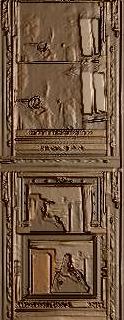









Cholesteatoma after lateral bulla osteotomy in two brachycephalic dogs
.
Schuenemann RM, Oechtering G.
Clinical Department for Small Animals, Faculty of Veterinary Medicine, University of Leipzig, Leipzig, Germany. schuenemann@
kleintierklinik.uni-leipzig.de
Abstract
This report describes a French bulldog and a pug that presented to the authors' hospital following total ear canal ablation (TECA) and lateral bulla osteotomy (LBO), with signs of recurring otitis media and difficulty opening their mouths. The bulldog also had unilateral facial paralysis and sensory deficits of the trigeminal nerve on the ipsilateral side. Computed tomography and MRI scans suggested cholesteatoma in the bulldog, but showed only slight enlargement of the bulla in the pug. Histopathologic examination of samples yielded cholesteatoma in both cases. The authors suspect that development of the cholesteatomas was linked to the TECA/LBO surgery in both cases. Cholesteatomas may occur more frequently than currently thought. Even if only slight changes of the bulla wall are detected on CT, early-stage cholesteatoma should be considered. The narrow anatomic conditions in brachycephalic dogs possibly predispose such breeds to develop cholesteatoma after middle ear surgery because complete removal of all inflammatory and epithelial tissue can be more difficult than in other breeds. To the authors' knowledge, this is the first report of an aural cholesteatoma causing sensory deficits of the trigeminal nerve.......Learn More about Bulldogs.